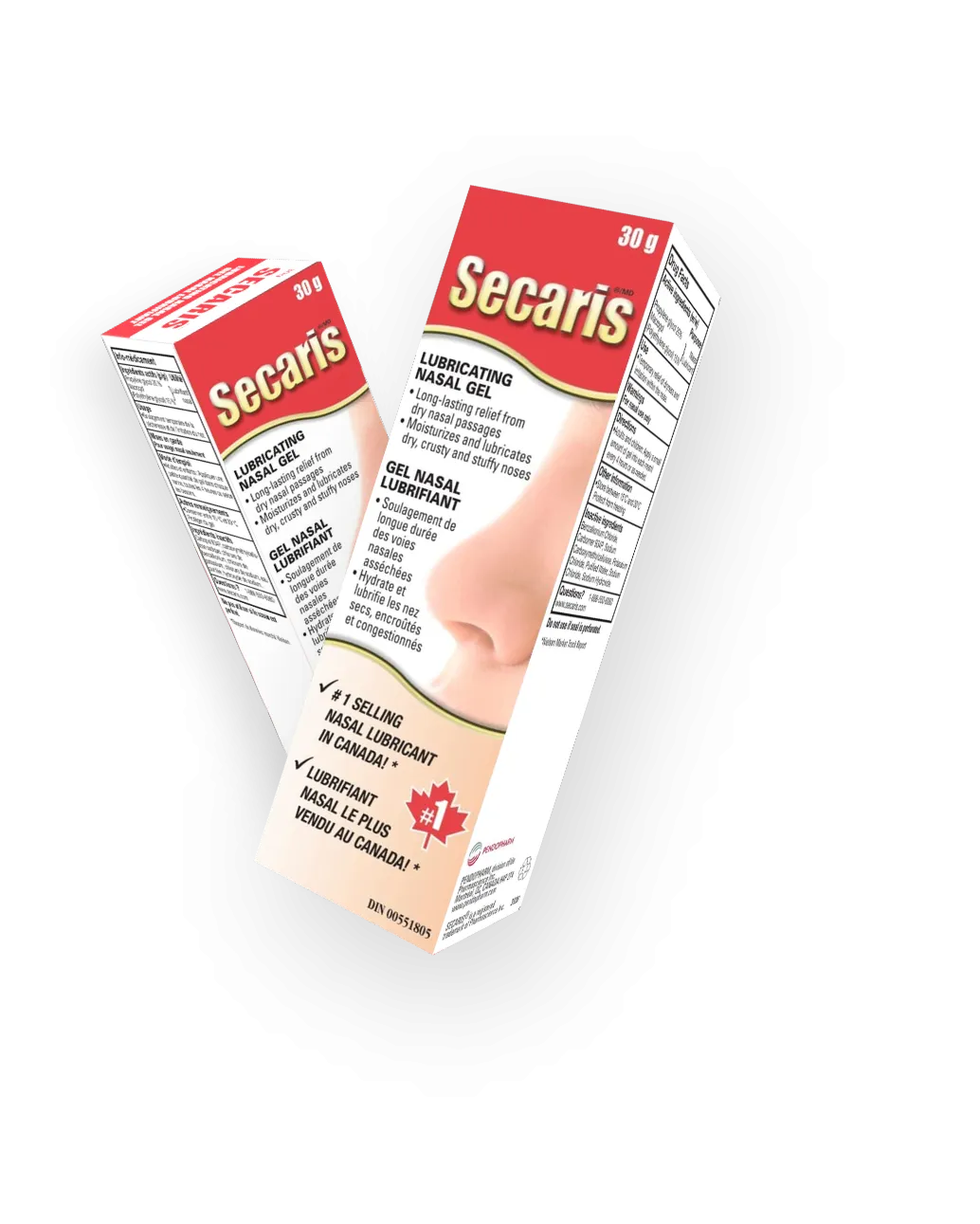Lack of moisture in the mucous membrane and sinus cavities is what causes a dry, crusty nose.[1]
However, this condition can be treated—a dry, crusty nose is easily treatable at home with over-the-counter medications and even simple home remedies and is not usually a cause of medical concern. However, if left untreated it can lead to complications that you definitely want to avoid, such as laryngitis, pharyngitis, or sinusitis.[2]
Here are some simple at-home remedies to treat a dry, crusty nose:
- Nasal Irrigation[3] Nasal irrigations are carried out with saltwater rinses that help clean out the nasal passage and hydrate a dry nose. The steps are fairly simple: all you have to do is mix ¼ teaspoon of salt in 2.36 litres of sterilised warm water, using a nasal irrigation bottle, neti pot, or a bulb syringe to gently flush out the nasal passages.
- Humidifier[4] Keeping the air in your surroundings moist at all times with a humidifier can help hydrate a dry nose
- Hydration[4] Drinking plenty of water and other hydrating drinks helps keep your body and nasal passages hydrated thereby reducing symptoms and occurrence of a dry nose.
- Steam Inhalation[5] Helps reduce symptoms and provides relief from a dry nose. It’s easy to do at home - boil a pot of water and wait for it to steam. Once enough steam is rising from the pot, hold your head over it at a safe distance and cover with a towel or cloth that will help you trap the steam. Breathe deeply for 5-10 minutes with required intervals..
- Warm Compress[4] A warm compress can help ease the irritation of a dry nose and reduce inflammation. Soak a clean cloth in warm water, wring it out and hold it against your nose for a few minutes. Repeat as required.
- Vitamin A[6] One of the many benefits of Vitamin A is that it helps maintain a healthy mucous membrane in the nasal passage. Incorporating foods high in Vitamin A into your diet such as carrots, sweet potatoes, and spinach can not only help reduce the symptoms of a dry, crusty nose but also help in future prevention.
- Lubricants[7] Applying petroleum jelly, aloe vera, or olive oil moisturises soothes a dry, crusty nose. Apply a small amount on the inside of the nostrils. However, do make sure the amount is not excessive since it can worsen nasal congestion and inflammation.[8]
Another possible solution would be Secaris® Canada’s No. 1 selling nasal lubricant.[9] With its water-based formula, Secaris® helps moisturise a dry, crusty, and stuffy nose and has a long-lasting lubricating effect. It is also compatible with oxygen therapy.
If these treatments listed above are not helping you and you are still suffering from a dry, crusty nose, then it’s best to seek professional medical advice.
This product may not be right for you. Please read and follow the label before use.
Secaris® is a registered trademark owned by Norwell Consumer Healthcare Inc.
REFERENCES
- https://www.advancedentdenver.com/allergy/dry-sinuses/#:~:text=Dry%20sinuses%20develop%20when%20the,nosebleeds%2C%20and%20even%20sinus%20infections
- https://breathefreely.com/education-library/dry-nose/nasal-dryness/#:~:text=For%20the%20most%20part%2C%20a,can%20also%20cause%20recurrent%20bleeding
- https://www.medicalnewstoday.com/articles/323068
- https://www.advancedentdenver.com/allergy/dry-sinuses/#:~:text=Dry%20sinuses%20develop%20when%20the,nosebleeds%2C%20and%20even%20sinus%20infections
- https://www.medicalnewstoday.com/articles/323068
- https://www.ncbi.nlm.nih.gov/pmc/articles/PMC6162863/
- https://www.mayoclinic.org/petroleum-jelly/expert-answers/faq-20057784#:~:text=If%20you%20have%20concerns%20about,several%20hours%20of%20lying%20down
- https://www.orlandoent.com/blog/nasal-spray-how-much-is-too-much/
- IQVIA Market Track Report





